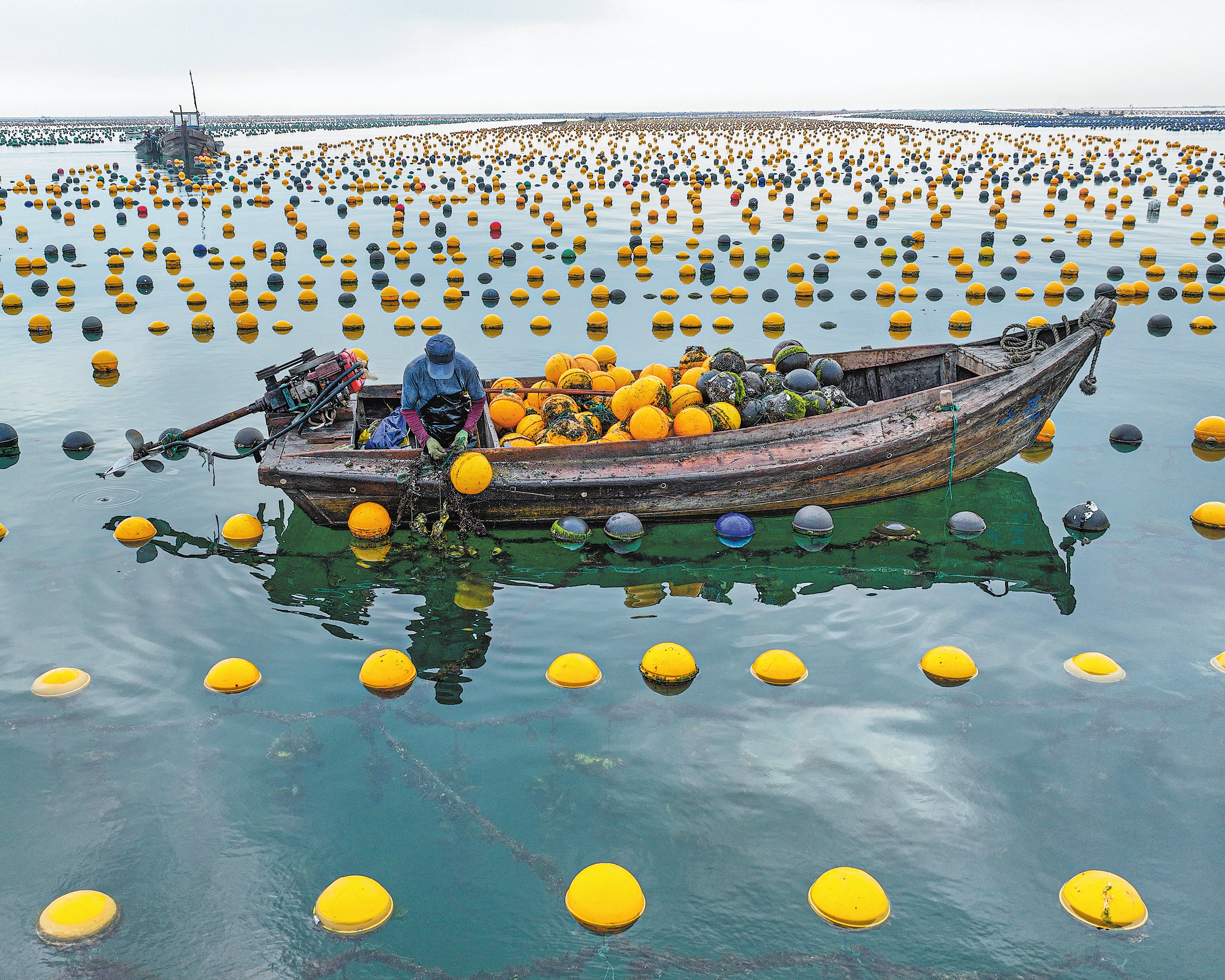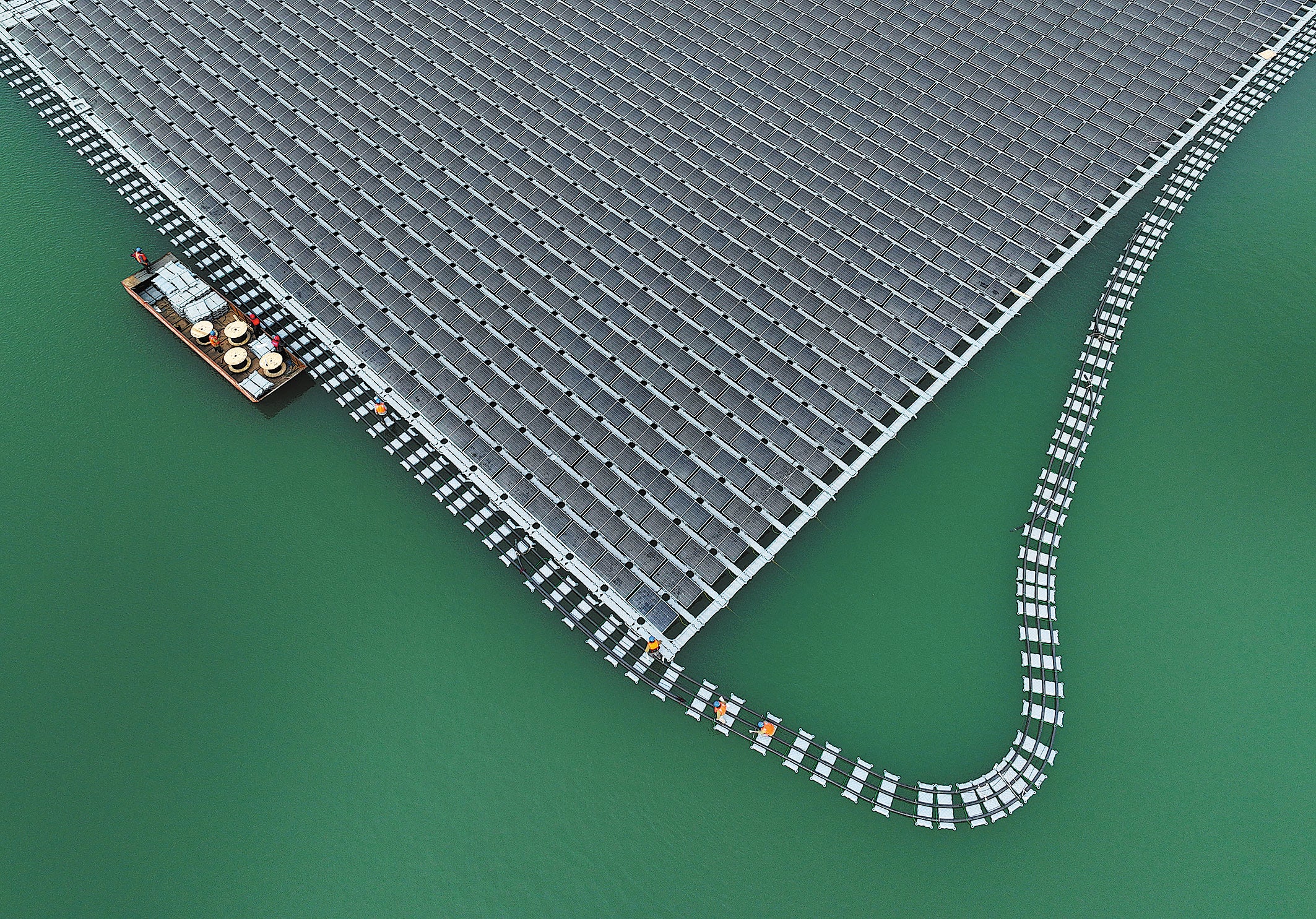New ideas floated to curb carbon
THE ARTICLES ON THESE PAGES ARE PRODUCED BY CHINA DAILY, WHICH TAKES SOLE RESPONSIBILITY FOR THE CONTENTS

A woman in Jinan, Shandong province, opens a mini-program on her mobile phone that tracks, encourages and rewards carbon reduction to see how much she has earned from selling recyclable items over the past two months.
The amount is a respectable 255 yuan (£29), according to the mini-program Tanhui Qilu, one of the innovative measures introduced in Shandong as part of its efforts to promote environmentally friendly practices among the public, communities and businesses.
The woman, who wanted to remain anonymous, said the app makes it easier to embrace a green lifestyle. “The ‘carbon-inclusive’ house where I can sell recyclable waste is the part I like most. It’s a convenient way to deal with waste.”
She tries to reduce her carbon emissions by walking or using buses to get around and selling recyclable items such as cardboard cartons, plastic and clothing via the platform, she said. Over the past five months she has managed to reduce her carbon dioxide emissions by 1,261 pounds, the mini-program tells her.
She has also collected 252 carbon credits by practising low-carbon activities and answering questions about carbon emissions, she said. These credits can be exchanged for tickets to scenic spots and to pay for hotel rooms.
Wu Hongyang, director of the climate change response office of Shandong’s Department of Ecology and Environment, said: “The carbon-inclusive platform encourages public participation in energy-saving and carbon emission-reduction actions, promoting sustainable and eco-friendly lifestyles.”
It also plays a crucial role in leading Shandong towards green, low-carbon and high-quality development, he said.

Since China set the goals of peaking carbon dioxide emissions before 2030 and achieving carbon neutrality by 2060, green and low-carbon concepts and innovations have been applied in people’s daily activities and in industry.
The country has established 572 national-level demonstration areas of ecological civilisation construction, the Ministry of Ecology and Environment said.
Shandong has ramped up its efforts on green development in various sectors, from grassroots initiatives to provincial-level projects, and established a pilot zone for green, low-carbon and high-quality development, the first of its kind in the country.
One major achievement is restoring the Yellow River estuary in Dongying, where the waterway flows into the sea.
After 30 years the Yellow River knife fish has been spotted again, thanks to efforts to restore the ecological balance in the area, Shandong’s ecology and environment department said.
The knife fish is a rare species that lives mainly in the lower reaches of the river. Because of overfishing and the low water runoff in the river basin, the knife fish population has been declining since the 1990s.
Steps have been taken to restore the delta’s ecological system in recent years, in line with the national strategy of promoting ecological conservation and the high-quality development of the Yellow River Basin.
These measures include restoration projects such as supplementary water supplies to ensure the health of wetlands, cordgrass eradication and offshore biodiversity conservation. Monitoring has also been set up in the delta to manage data on meteorology, water and soil quality, and marine life.
Protecting the habitats of key species such as cranes, black-billed gulls and Oriental white storks has also been given priority, along with preserving native flora such as wild soybeans. Aquatic life is also being increased to boost biodiversity levels.
The restored ecological system has benefited residents living near the Yellow River who are eyeing tourism opportunities. In Yangmiao, Kenli district, Dongying, next to the river new residential buildings sit in neat rows.
The community’s amenities include a seniors’ canteen, kindergarten, clinic and fitness room.
In addition, 140 old houses are due to be renovated and upgraded in two phases, in an effort to create a rural tourism destination. The project began trial operations in September and is expected to create more than 200 jobs, said Zhang Mairong, an official at the community.

Bookmark popover
Removed from bookmarks